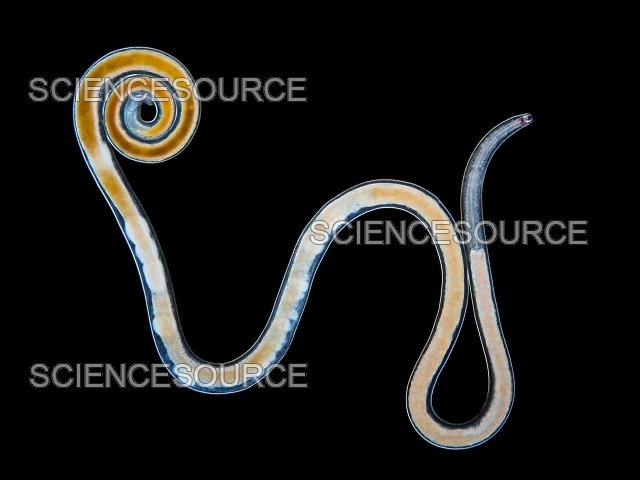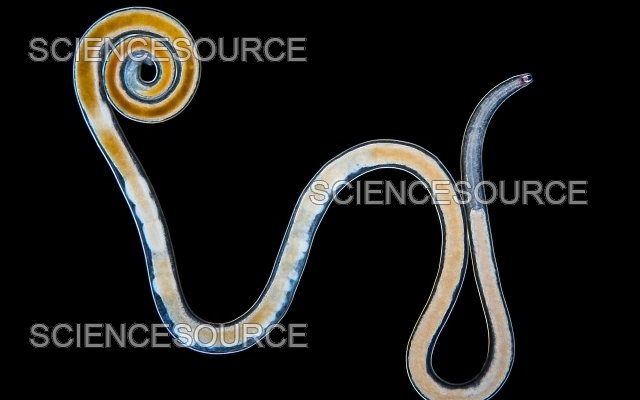
Now, let me tell you, this isn’t just about finding worms. It’s about appreciating these fascinating organisms and the environment they thrive in. Picture yourself exploring a garden, a patch of forest, or even a puddle on a rainy day. These are the places where you might encounter roundworms, each one contributing to the soil’s health or the food web. So, grab your enthusiasm, and let’s dive into the world of roundworms!
What Are Roundworms?
To kick things off, let’s clarify what roundworms are. Roundworms belong to the phylum Nematoda and are among the most abundant organisms on Earth. You can find them almost everywhere: in soil, freshwater, and even in oceans. They can range in size from microscopic to several feet long, depending on the species. A common species you might encounter is the *Caenorhabditis elegans*, which is tiny and often studied in labs due to its simplicity.
One of the fascinating things about roundworms is their shape. As their name suggests, they have a cylindrical body that’s smooth and often tapered at both ends. This distinctive shape makes them unique compared to other types of worms, like earthworms, which are more segmented. Roundworms don’t have segments, and their bodies are covered with a tough outer layer called a cuticle, which protects them in various environments.
Understanding what they are sets the foundation for how to find them. You might be wondering why you should bother identifying these creatures. Well, they play essential roles in nutrient cycling and soil health. By identifying roundworms, you contribute to conserving these vital ecosystems.
Where to Look for Roundworms
So, where exactly can you find roundworms? They often inhabit soil, leaf litter, and aquatic environments. If you’re looking to spot these elusive little guys, start by examining rich, moist soil, especially in gardens or forests. Reach down into the earth, and you’ll likely find them wriggling within the top few inches, where they thrive in nutrients.
Another interesting location is compost piles. Roundworms love decaying organic matter; it’s like a buffet for them! When you turn the compost, you may come across these worms thriving in the rich organic material. If you’re checking out a garden or yard, look under rocks or logs, as these areas provide a perfect microhabitat for roundworms.
Don’t overlook water sources, either. Puddles, streams, and other bodies of freshwater can host aquatic roundworms. They’re usually found in the sediment, so if you scoop up some mud from the bottom, you might spot them swimming around or wriggling their way through the muck.
How to Spot Roundworms in the Soil
Identifying roundworms in the soil can take some practice, but once you know what to look for, it becomes easier. Start by digging about 4-6 inches into the ground. Try to pick a spot that’s rich in organic material. Bring along a small container or a clear plastic bag to collect your samples. Here’s how to do it step-by-step:
- Dig Deep: Use a small trowel to scoop some soil into your container.
- Moisten the Sample: If the soil is dry, add a little water to make it easier to sift through.
- Gently Stir: Mix the soil, and then let it settle for a moment. This way, the roundworms will rise to the top.
- Look Closely: Use a magnifying glass if you have one. Roundworms are tiny, and a little magnification can go a long way!
Once you start searching, keep an eye out for those slender, wiggly shapes. They might be hard to see at first, but once you spot one, you’ll start noticing them everywhere. Remember, patience is key when it comes to spotting roundworms.
Recognizing Different Species of Roundworms
Just like there are various types of birds or plants, roundworms come in many species, each with its unique features. While some species are microscopic, others can be seen with the naked eye. Here’s a quick guide to a few common types you might encounter:
- Free-Living Nematodes: These are typically found in soil and decaying organic matter. They contribute to nutrient cycling and soil health.
- Parasitic Nematodes: These worms live in or on a host organism. They can affect plants, animals, and even humans. While they’re vital for research, they can also be pests.
- Aquatic Nematodes: Found in freshwater and marine environments, these nematodes help break down organic material in water systems.
To identify these worms, look for variations in color, size, and movement patterns. Free-living nematodes often exhibit a sinusoidal movement pattern, while parasitic types may have a more erratic motion. Observing their behavior and habitat is key to proper identification.
Tools and Techniques for Identification
If you want to take your roundworm identification skills up a notch, consider investing in some basic tools. Here’s a list of handy items that can make your search easier:
- Magnifying Glass: A great tool for seeing those tiny details up close.
- Field Notebook: Keep track of your findings, sketches, and observations during your searches.
- Sample Collection Containers: Use small jars or zip bags to store soil samples without losing any tiny critters.
- Online Resources: Websites and apps can be useful for identifying species based on photos and descriptions.
Using these tools will help you document your findings and gain confidence in your ability to identify roundworms. Don’t hesitate to take notes on where you found them and any characteristics that stood out. Over time, you’ll build a personal guide to the roundworms in your area.
Why Identifying Roundworms Matters
You might be thinking, “Why go through all this trouble to identify roundworms?” Well, knowing about roundworms goes beyond just a hobby. These worms play critical roles in ecosystems, helping with nutrient cycling and even contributing to plant health. By understanding their presence and diversity, we can better manage and protect our natural world.
In agriculture, for instance, knowing the types of roundworms present in the soil can help farmers determine the health of their crops. Some roundworms, like the beneficial free-living species, can help decompose organic matter, while parasitic nematodes can damage roots. Understanding the balance between these types is crucial for sustainable farming practices.
Additionally, roundworms are important in scientific research. They serve as models for studying development, genetics, and even diseases. So, every time you spot a roundworm, you’re part of a larger story, contributing to discoveries that can impact science and conservation efforts.
Identifying a roundworm in its natural habitat is more than just an exciting activity—it’s a way to connect with nature. It opens your eyes to the tiny creatures that play big roles in our ecosystems. By knowing where to look, what to look for, and why it matters, you’re equipped to explore the world of roundworms with confidence.
As you embark on this journey, remember that each roundworm you spot contributes to a greater understanding of our environment. You’re not just looking for worms; you’re participating in the intricate dance of life that occurs beneath our feet. So, next time you find yourself surrounded by soil or water, take a moment to dig a little deeper. Happy exploring!

